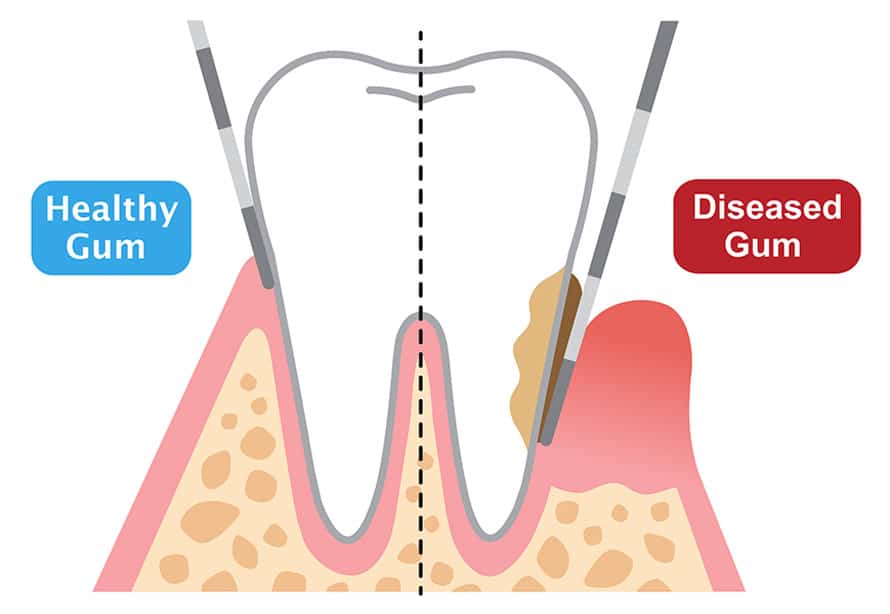Periodontal Surgery

Periodontal disease develops when plaque spreads below the gum line and causes the tissue and bone that support the teeth to recede. The gums then separate from the teeth and form what are known as periodontal pockets which can become infected, leading to further loss of tissue and bone. Extensive bone loss due to periodontal disease can result in the loss of one or multiple teeth.
In order to rid the gums of harmful bacteria, the periodontist can perform a procedure often referred to as pocket depth reduction surgery. During this procedure, the periodontist will create a flap into the gum and fold it back to temporarily expose the tooth root and bone. If necessary, the periodontist will smooth areas of damaged bone to limit the surfaces upon which bacteria can grow. After ridding the area of bacteria, the gum tissue is stitched back into place. This procedure minimizes the depth of periodontal pockets and gets rid of bacteria in order to minimize the effects of periodontal disease and limit its progression.
